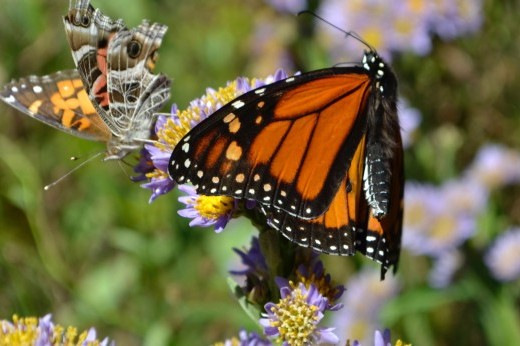Even very small patches of plants help attract pollinators and other wildlife to cities. Researchers recently found that adding things like planters to a concrete plaza can draw a surprisingly wide diversity of insects and spiders. Greenest Block in Brooklyn judges and organizers have noticed a similar effect with stoop plantings, tree beds, and even window boxes in Brooklyn.
“Life follows life. I definitely see more diversity of insects on the blocks with the most plantings. It’s important to remember that every planter is a potential piece of habitat,” says Nina Browne, Brooklyn Botanic Garden’s community program manager. She has been snapping photos of some of the butterflies, bees, and other insects she sees out in the field during the contest for years.
Ecologists in Australia recently looked at “pop-up parks,” specifically the short-term installation of planters full of native grasses in a library courtyard in Melbourne. They tracked the insects that appeared there over six weeks and found a 161 percent increase in pollinator insect abundance and identified 90 different species of insects and spiders.
During Greenest Block judging, Browne and the judging teams have noticed that the more diverse the plantings, the wider the variety of insects. Different species of bees, butterflies, and dragonflies are among those most frequently spotted.
That’s good news for city dwellers who want to provide useful habitat for monarchs, honey bees, or any other beneficial wildlife.
“Really, all you need is a window box to have an impact,” says Browne. Container plantings on stoops, tree beds filled with native plants, and backyard gardens that include pollinator-friendly plants and other resources are all options, too.
It’s important to avoid treating any of your plants with chemical pesticides, though. These are unnecessary and are just as likely to kill beneficial insects, including those that would attack pests.
Below is just a sample of some of the beautiful bees and butterflies spotted on Brooklyn’s greenest blocks this month. Plenty of dragonflies were also seen, but they tended to zoom away before they could be caught on camera.



